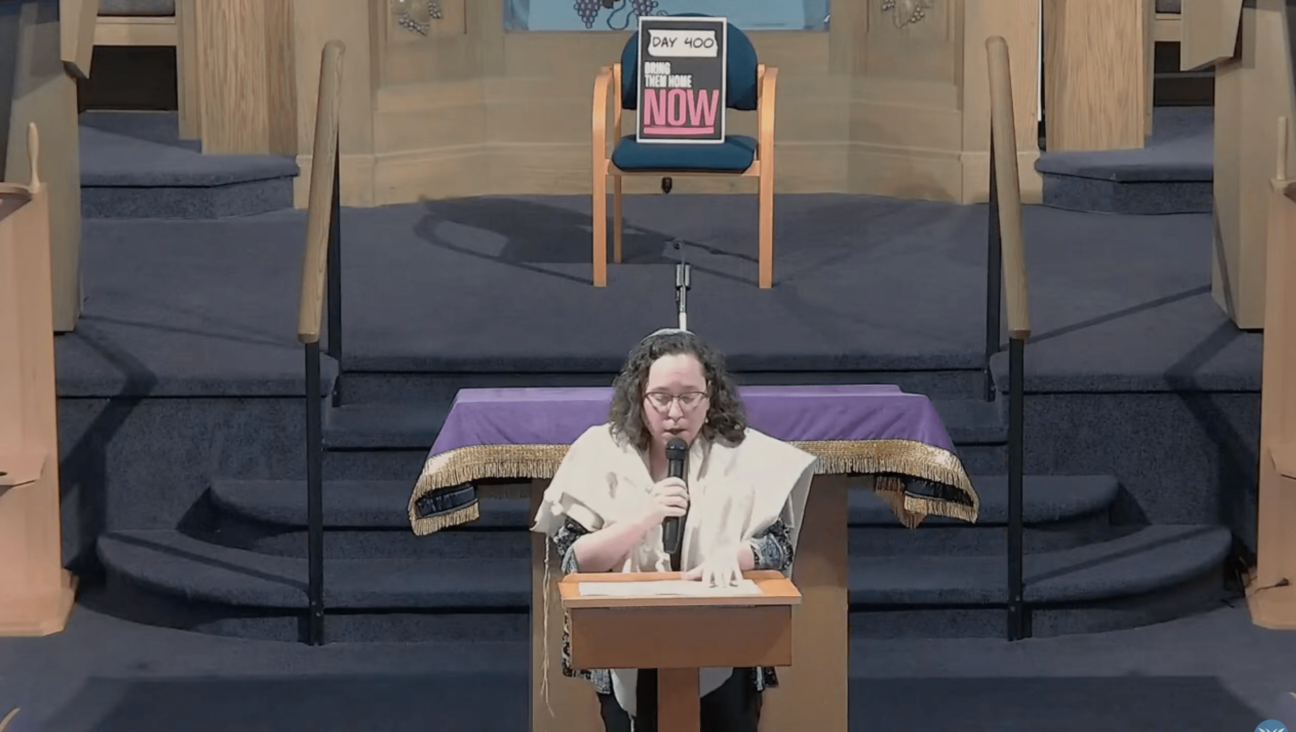Pesach on My Mind
A friend, knowing how dense my Haggadah is — much of the traditional text, my own interpolations, sundry gems from here and there — asks whether by now I can’t just take for granted that the people at my Seder table know what needs to be known about slavery, about memory, about elements large and small. She wonders, therefore, what the point of it is. Must we yet again discuss and debate whether to include the shfoch chamatchah, that venting petition to God to “Pour out Thy wrath on the nations that knew Thee not”? Or whether, since we seem to be programmed to always want more, we actually mean with each verse of the Dayenu that we’d really have been satisfied? And so forth.
I don’t remember any longer when it was that my father turned the Seder over to me. (Actually, one to me, one to my brother.) I remember only that it was for me a serious milestone, and from that time to this the celebration has been a major event in my life. My sister-in-law makes the chicken soup and the kneidlach, lighter than air; my eldest daughter makes the charoset, sweet and dense; I make the gefilte fish (which is not nearly so big a deal as it sounds); I make a terrific carrot-apple-sweet-potato muffin (thanks to Joan Nathan); most of all, I make a Haggadah. I was thrilled when my children came to be old enough to “get it,” to understand how powerful words can be, and the ideas they convey. A Seder for adults! What joy!
Now we reach a new and somewhat murky phase. When the grandchildren were wee ones, we could manage to include them at the edges; mostly, they left the table to play in another room until it was time to redeem the afikomen. But now one of them is going on 8, another going on 7, and what with blended families and such we’ll also have a 14-year-old and two 12-year-olds, plus a 5-year-old and a very precocious 3-year-old. So: Is it time to shift in their direction — and, if so, to what extent, and how?
Some of it is obvious: The traditional Haggadah omits entirely, and evidently quite consciously, the Moses story, much of which is age-appropriate for young children. And we can ask the older children, as we do the adults, to prepare an idea, a question, a reading to share with us all, the 35 or so people at the table. But I am not into creating a faux desert and pretending we are on a trek, and for sure not into making a big tarrarram about the plagues.
No, the real question is how to explain the heart of the matter — to wit, slavery. The Seder is, first and foremost, a pedagogic event, what’s called “a teaching moment,” and the thing that wants to be taught, that insists on being taught, can be condensed into two of the Haggadah’s words: Avadim hayinu — we were slaves. It doesn’t tell us our forbears were slaves; it says that we were slaves, and that we are to remember in every generation to see ourselves as if it was we who came out of Egypt, from slavery to freedom. Neglect to focus on that and you might as well toss the Haggadah and watch the Charlton Heston movie instead.
But — here’s the hard part — any serious consideration of the freedom we celebrate at the Seder table is inherently a political consideration. What does it mean, for example, to celebrate freedom when more than 20 million of our neighbors are unemployed, more than 6 million of them out of work for over six months? One does not want to harangue the guests, but surely there’s a need to move beyond abstraction, to anchor the idea of freedom — and slavery, its opposite — in our world, our time.
Here’s one way to bite at that apple: Consider that when the (Aramaic) words Ho lachmah anyah, “this is the bread of affliction, let all who are hungry enter and eat” were first written and spoken, those who recited those words likely knew the names of the hungry, their neighbors down on their luck. These days, few of us know the name of even one of the nearly 50 million Americans (including almost 17 million children) who experience hunger or the risk of hunger. Household food insecurity has mushroomed through the recession and among the unemployed. In 2009, the nation’s food banks were confronted with an average 30% increase in requests for food.
That’s why there’s Mazon: A Jewish Response to Hunger (with which I am intimately associated) and a host of other nongovernmental agencies that seek to reach out and make real the words we recite early in the Seder: “Let all who are hungry enter and eat.”
And that’s why there’s a government program (replacing food stamps) called Supplemental Nutrition Assistance Program, or SNAP. Just about half of all American kids will receive SNAP benefits at some point before they are 20 — and for African-American children, the number surges to 90%.
And that’s just here at home. It doesn’t begin to describe the rest of our broken world, introduce all who are hungry.
A 7-year-old can surely get the gist of all this. Grownups, too. And we can, and therefore should, do something about it.
A message from our CEO & publisher Rachel Fishman Feddersen

I hope you appreciated this article. Before you go, I’d like to ask you to please support the Forward’s award-winning, nonprofit journalism during this critical time.
At a time when other newsrooms are closing or cutting back, the Forward has removed its paywall and invested additional resources to report on the ground from Israel and around the U.S. on the impact of the war, rising antisemitism and polarized discourse.
Readers like you make it all possible. Support our work by becoming a Forward Member and connect with our journalism and your community.
— Rachel Fishman Feddersen, Publisher and CEO






















